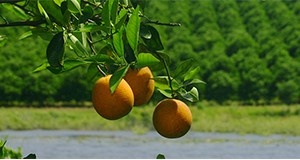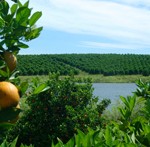
A Citrus Health Management Area (CHMA) is a group of growers who work cooperatively to coordinate insecticide application timing and mode of action in order control the insect vector of citrus greening disease. CHMAs help prevent insect vectors from moving between groves and reduce the likelihood that insects will develop pesticide resistance. This 3-page fact sheet written by Ariel Singerman and Brandon Page and published by the Food and Resource Economics Department analyzes the case-study data on yields of Valencia oranges from blocks located in two different categories of CHMAs to find the impact of citrus greening disease on citrus yields and provide evidence on the effectiveness of best class CHMAs as a way to deal with the disease. The analysis provides evidence that CHMAs can enhance an individual grower’s profitability at a time when margins are becoming increasingly narrow.
edis.ifas.ufl.edu/fe982
Tag: Citrus Pest Management
Guia de gestion de plagas para citricos en la Florida 2014: Interpretacion de los enunciados de PPE en las etiquetas de pesticidas
 Este documento le ayuda a comprender los enunciados revisados para Equipo de Protección Personal (PPE) que ahora hacen parte de las etiquetas de los productos pesticidas utilizados en las fincas, bosques, viveros e invernaderos. This 3-page fact sheet is a Spanish-language translation of 2014 Florida Citrus Pest Management Guide: Interpreting PPE Statements on Pesticide Labels. Written by O. Norman Nesheim, Frederick M. Fishel, and Tatiana Sanchez, and published by the UF Department of Agronomy, September 2013.
Este documento le ayuda a comprender los enunciados revisados para Equipo de Protección Personal (PPE) que ahora hacen parte de las etiquetas de los productos pesticidas utilizados en las fincas, bosques, viveros e invernaderos. This 3-page fact sheet is a Spanish-language translation of 2014 Florida Citrus Pest Management Guide: Interpreting PPE Statements on Pesticide Labels. Written by O. Norman Nesheim, Frederick M. Fishel, and Tatiana Sanchez, and published by the UF Department of Agronomy, September 2013.
http://edis.ifas.ufl.edu/cg089
Florida Crop/Pest Management Profiles: Citrus (Oranges/Grapefruit) (CIR1241/PI036)
Did you know that Florida growers produced 79 percent of the oranges harvested in the United States in 2008-2009? Learn about citrus production in Florida — production facts, production regions, production practices, worker activities, and major pests. This revised 18-page fact sheet was written by M.A. Mossler, and published by the UF Department of Horticultural Sciences, January 2011.
http://edis.ifas.ufl.edu/pi036
PP279/CG088 2011 Florida Citrus Pest Management Guide: Citrus Black Spot
PP279, a 6-page fact sheet by Megan M. Dewdney, Timothy S. Schubert, Mark R. Estes, and Natalia Peres, provides citrus producers with essential information for management of this fungal disease that causes fruit blemishes and significant yield losses — regulatory considerations and recommended chemical controls. Published by the UF Department of Plant Pathology, December 2010.
http://edis.ifas.ufl.edu/cg088
CIR1340/PI049 Florida Crop/Pest Management Profile: Limes, Pummelo, and Kumquat
Revised! Circular 1340, a 13-page fact sheet by Mark A. Mossler & O. Norman Nesheim, profiles lime, pummelo, and kumquat production in Florida, providing an overview of insect/mite, weed, disease, and nematode management. Includes key contacts and references. Published by the UF Department of Horticultural Sciences, November 2009.
http://edis.ifas.ufl.edu/pi049
AE438 GPS Accuracy for Tree Scouting and Other Horticultural Uses
AE438, a 7-page illustrated fact sheet by Reza Ehsani, Sherrie Buchanon, and Masoud Salyani, provides citrus producers using GPS for citrus greening disease scouting with some simple explanations of the causes of GPS error and the level of accuracy that can be expected from different classes of GPS receivers. Published by the UF Department of Agricultural and Biological Engineering, January 2009.
http://edis.ifas.ufl.edu/AE438